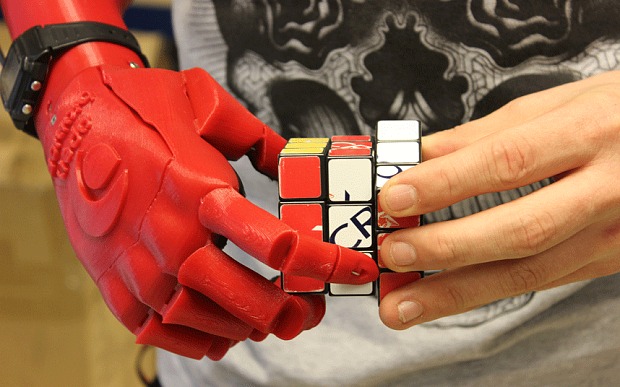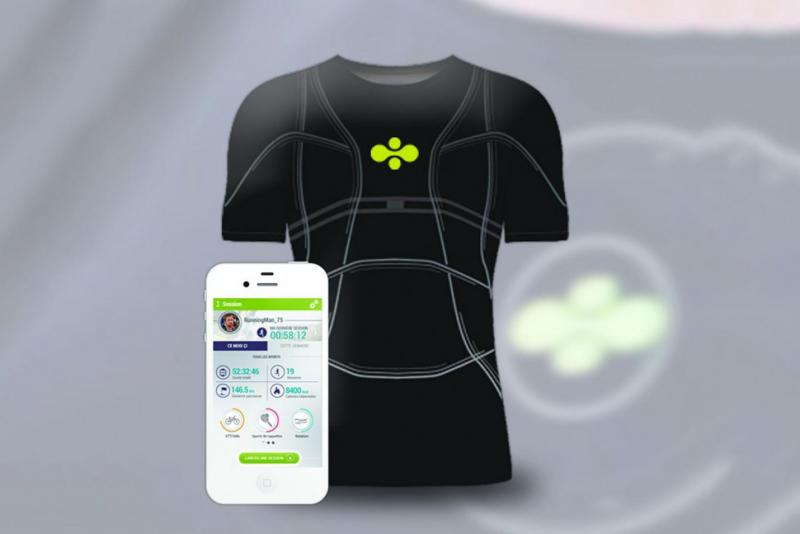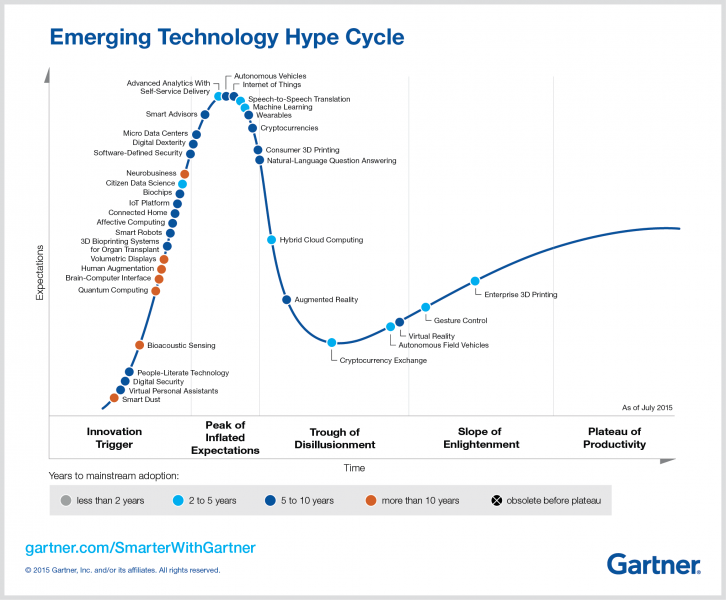We’ve spent some time this week scanning the news items to see if we can find a good list of future trends which all businesses need to incorporate into their strategic thinking in the years ahead. There’s certainly plenty to think about and to capture for business leaders right now, and one of the trends we’ll certainly see is that the pace of digital tech developments will rise-and-rise in the years ahead. Some commentators have suggested that we will see as much advancement in tech innovations over the next 20 years as we’ve seen in all of the past 300 years!
Gartner produces a quarterly report on digital technologies and their development and trends, and has usefully mapped this information onto its ‘hype cycle’ which helps us to understand where digital tech developments sit in terms of their development, and adoption.
As you can see from the current cycle, there is a whole queue of innovations coming forward which will be tested and either fail or become adopted technologies in the coming years. It really is a highly exciting but equally challenging time to be working out which of these development will be important to our business strategies.
Let’s select one which most people are now familiar with, and which has passed over the top of the cycle indicating it is being utilised and tested with real-life customer experiences – 3D Printing. Now we’ve seen some videos of things being printed, some of us have been able to experience and play with a 3D printer (for example at the Fab Lab at Exeter Library). And some very exciting uses have been found for this technology – including bespoke ‘printing’ of artificial limbs which can be manufactured in hours! Watch here.

And the 3d Printers themselves have come along way in a short time – improving their speed, capabilities, accuracy and reducing price points so that they are becoming more-and-more available for businesses to use. HP just launched what it terms its ‘production-ready’ printers aimed at enterprise use for businesses. These printers generally work with thermoplastics but some are now being developed to work with ceramics and other materials which will see the technology move forwards from prototyping to full-scale production levels. Read the BMW blog here.
But what type of business can make use of this technology regularly enough to justify the investment needed? Well there are lots of businesses which should be at least asking the question. Think of the objects used directly in your business, and also those used to support or enhance your business and your customer service. For example there are lots of businesses which deploy a mobile workforce for repairs and maintenance. What if in the future these mobile workers had a small 3D printer in their van (probably still a white one!), and which can be used to make various parts on-site and specific to their needs. Cuts out the need for ordering parts, waiting and returning to the site to complete the job.
 Another digital tech development moving along the cycle is Wearables. And again most of us have seen and heard of the new range of wrist-worn devices and many people received them as gifts last Christmas no doubt. The FitBit and the iWatch are the two in most common use at present. Our colleague - Cosmic Kate – had a new ring for Christmas – the Ringly which works in a very similar way with alerts for messages, tweets and likes flashing up in different colours on the ring.
Another digital tech development moving along the cycle is Wearables. And again most of us have seen and heard of the new range of wrist-worn devices and many people received them as gifts last Christmas no doubt. The FitBit and the iWatch are the two in most common use at present. Our colleague - Cosmic Kate – had a new ring for Christmas – the Ringly which works in a very similar way with alerts for messages, tweets and likes flashing up in different colours on the ring.
The popularity of these devices is set to grow considerably:
“In 2015, 39.5 million U.S. adults 18 and over used wearable devices, including smartwatches and fitness trackers — an increase of 57.7 percent over 2014, according toeMarketer. That growth will continue in 2016 and beyond, with 81.7 million adults using wearables by 2018, the research firm says.” (Source : CIO.com)
Wearable apps will become ever-more sophisticated and expensive offering to integrate diet information to offer suggestions for health improvement and fitness (FitBit will be offering this service very soon!). And athletes will turn to ‘smart clothing’ – connected garments which will monitor their performance and body stats in order for them to understand better their training needs.

And so again, the question for businesses is how can we take advantage of the growth in wearables, or probably more importantly the data which they collect. Well there are a growing range of uses being developed and considered for the wearables piece – activity trackers linked to health initiatives and services, movement monitors for elderly or infirm people living on their own, behavioural analytics used to predict future needs and service developments. Which of these may be of interest to your business?
In the next part of this blog we’ll take a closer look at the other big noise in digital technology of the coming years – the Internet of Things.
For more details on our new Digital Leadership programme – please read our recently published White Paper which you can access here. Sign up now to one of Cosmic’s Digital Leadership taster courses running this year – more details here.

